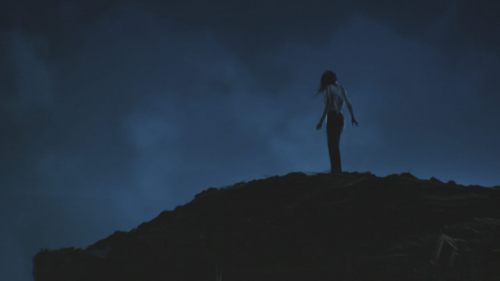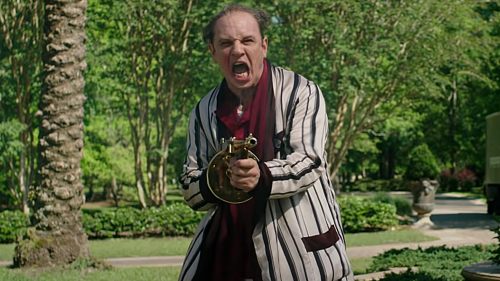Fantastic Fest Review: MEMORY: THE ORIGINS OF ALIEN Is Worthy Of The Xenomorph
As a documentary, Memory: The Origins of Alien is constructed a little bit like the body of poor Kane (John Hurt), the unlucky Nostromo crew member who unwittingly plays host to a xenomorph: there’s one story hiding inside a different one, and the two do not coexist peacefully. Alexandre O. Philippe’s follow-up to the superb 78/52 fairly clearly shifted its focus during production away from its original intent, a detailed oral history of the terrifying, iconic chestburster scene and its impact on popular culture. But what instead emerges is an intriguing and worthy successor less to his own film than to Rodney Ascher’s Room 237, in this case a thoughtful and investigative look at the mythmaking embedded in Ridley Scott’s entire film.
To some extent, Philippe took on a subject that’s already been pretty thoroughly covered; notwithstanding the library’s worth of books written about the film (including J.W. Rinzler’s terrific, just-published The Making of Alien), Charles De Lauzirika did a truly spectacular job documenting the production of all four of the original Alien films in a box set for their home video releases. Additionally, Frank Pavich’s Jodorowsky’s Dune covers at least some of the same territory as this film in terms of Dan O’Bannon’s early career choices, his connection to artist H.R. Giger, and the path that led to their legendary collaboration. But Philippe fills in many more details about O’Bannon’s feverish imagination in the build-up to Alien, and crucially, explores the timeline that led the screenwriter from John Carpenter to Roger Corman to Walter Hill, and eventually, to Scott.
The centerpiece of the documentary is still examining the chestburster scene, which is couched not only in some fascinating production details but smart commentary by a revolving door of critics and experts who highlight how Scott’s visual language alternately establishes a familial environment, creates class dynamics (and conflicts) among the crew members, and sets up a powerhouse payoff as Kane succumbs to the xenomorph. But the conversation that surrounds this part of the film is imminently more compelling precisely because it feels speculative and intangible: what ancient myths did Giger tap into and combine to create a creature that utterly fascinates and terrifies audiences? What frequencies was O’Bannon working on when he engineered this story that seems to capture such primal and irresistible feelings? And what are the themes about gender, class, and identity subtly being explored that continue to resonate today long after the film was franchised and turned into a piggy bank for Fox?
Giger was not only drawing on Hieronymous Bosch and Francis Bacon for his designs - which Fox initially wanted nothing to do with - but the inspirations of his childhood, like a mummy at a local museum that transfixed him for weeks. O’Bannon, meanwhile, drew upon everything from Lovecraft to Aeschylus, channeling those influences into a singularly riveting story built on sci-fi concept but undergirded with philosophical, even mystic concepts. Philippe chronicles and decodes these elements of its story, the design of the creature, and the primal emotions that its alchemy has drawn out of audiences for more than 40 years. It’s an impressive feat of storytelling. But again, it seems clear that even if to some extent that notion drove the filmmaker towards exploring the chestburster scene in the first place, he seems to have realized that, 1), there are only so many behind-the-scenes moments he can uncover that haven’t already been documented, and 2), looking at the film as a whole for its mesmerizing impact on the whole of cinema and popular culture is a far richer, more fruitful and more original conversation to have.
In which case, Philippe’s latest is, perhaps appropriately, a mixed bag of nuts-and-bolts making-of footage, film school deconstruction, and literary analysis and theory that doesn’t quite cohere. Nevertheless, there’s something to be said for a movie where even if the whole thing does not pulse with new and original life, it’s exhilarating if even a few provocative ideas come exploding out.



